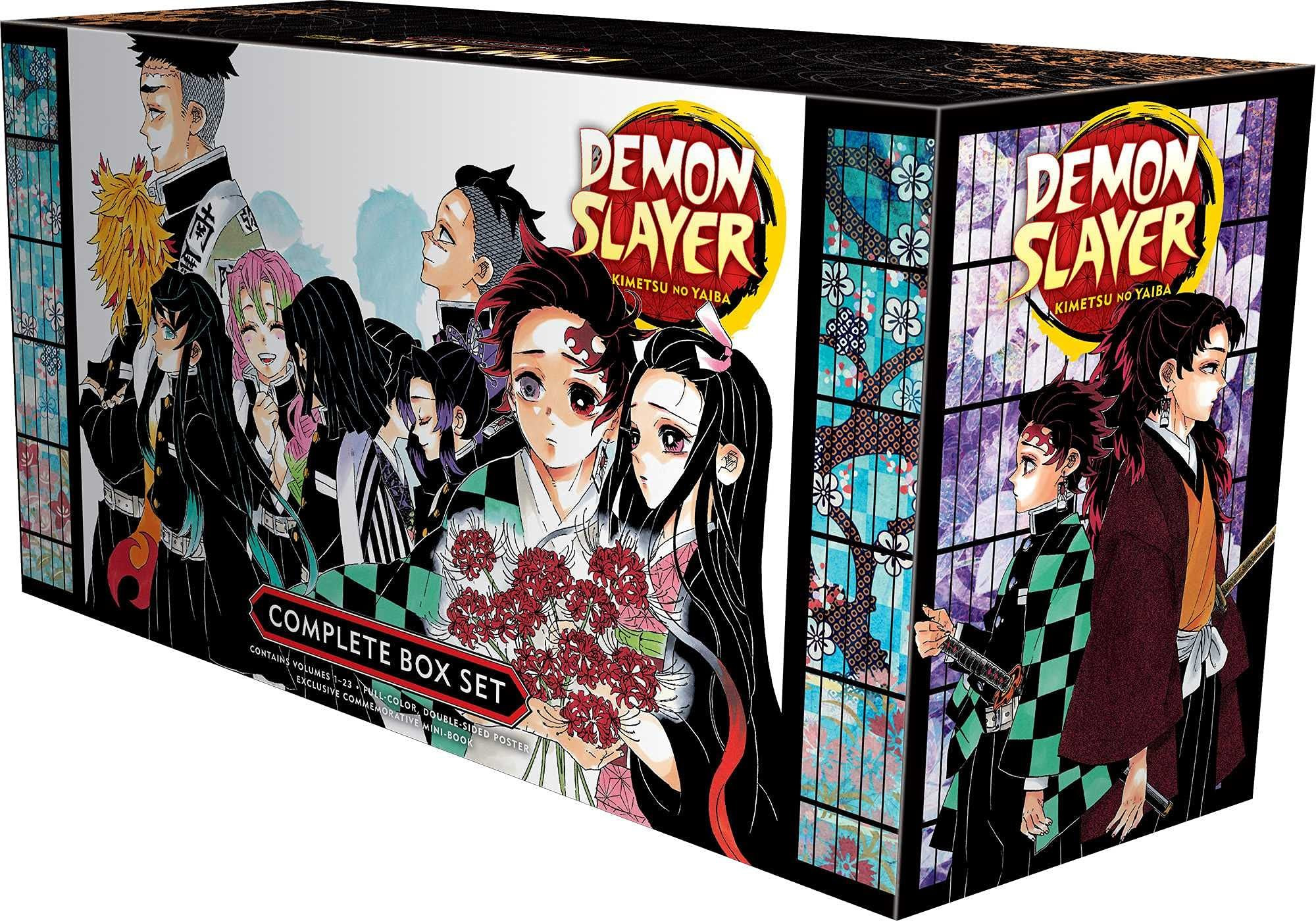Demon slayer manga book – Demon Slayer manga book? Yo, that’s
-huge*. This ain’t your grandma’s manga; we’re talkin’ a global phenomenon, a total sales juggernaut that’s taken the world by storm. From its killer art style to its epic story and unforgettable characters like Tanjiro, the Demon Slayer manga has totally redefined what a shonen manga can be. Get ready to explore the hype, the lore, and everything else that makes this series so insanely popular.
We’re diving deep into the sales charts, breaking down Tanjiro’s character arc, exploring the demon-slaying world, analyzing the art, and uncovering the themes that resonate with millions. Plus, we’ll compare the manga to the anime and check out the crazy impact it’s had on pop culture. It’s gonna be epic.
Discover the crucial elements that make absolute threshold manga the top choice.
Demon Slayer Manga: A Total Breakdown: Demon Slayer Manga Book
Yo, what’s up, manga heads! Demon Slayer took the world by storm, and for good reason. This ain’t your grandpappy’s shonen manga; it’s got action, drama, killer characters, and art that’ll make your jaw drop. Let’s dive into what makes this series such a massive hit.
Popularity and Sales of Demon Slayer Manga
Demon Slayer’s popularity is, like, off the charts. It’s sold millions of copies worldwide, smashing sales records and becoming a global phenomenon. Check out these sick sales figures:
| Volume | Year Released | Approximate Sales (Millions) | Notes |
|---|---|---|---|
| 1-10 | 2016-2019 | 10+ | Initial release, building momentum. |
| 11-20 | 2019-2020 | 50+ | Anime adaptation boost. |
| 21-23 | 2020-2023 | 30+ | Continued success, post-anime hype. |
Compared to other popular manga like One Piece and Attack on Titan, Demon Slayer quickly climbed the ranks, becoming a top seller and a major player in the industry. Its success is due to a killer combination of factors: amazing art, compelling characters, and a story that resonates with a wide audience.
Character Analysis: Tanjiro Kamado
Tanjiro, the main man, is all about that positive vibes and unwavering determination. His journey is one of growth and resilience, facing unimaginable loss and still fighting for his sister.
- The death of his family: This tragic event sets his entire arc in motion, fueling his desire for revenge and protecting Nezuko.
- His training with Urokodaki: This period shows his dedication and perseverance, honing his skills and mastering Water Breathing.
- His fight against Muzan: The final battle showcases his ultimate growth, both in strength and emotional maturity.
Compared to Nezuko, who is more reserved and protective, Tanjiro is outwardly emotional and driven by empathy. While Nezuko’s strength is passive and protective, Tanjiro’s is active and offensive.
The World of Demon Slayer: Setting and Lore
The world of Demon Slayer is a mix of historical Japan and supernatural elements. The settings are visually stunning and integral to the narrative.
- The serene mountain villages: These peaceful settings contrast sharply with the brutal reality of demon attacks, creating a powerful sense of juxtaposition.
- The bustling city streets: These areas offer a different feel, highlighting the hidden dangers lurking beneath the surface of everyday life.
- The ominous Demon infested mountains: These are locations of immense danger, showcasing the power and brutality of the demons.
- The Demon Slayer Corps Headquarters: A place of training and strategy, emphasizing the organized nature of the fight against demons.
The Demon Slayer Corps is a highly structured organization with ranks and breathing styles. Demons vary in strength and abilities, some possessing unique powers or weaknesses. Lower-ranked demons are relatively weak, while the Upper Moons are incredibly powerful and cunning.
Artistic Style and Visuals
Demon Slayer’s art style is incredibly dynamic, using bold lines and expressive shading to convey emotion and action. The panel composition is masterful, guiding the reader’s eye and creating a sense of movement and energy.
The early volumes feature a slightly softer style, while the later volumes showcase a more refined and detailed approach, particularly in the action sequences. The art enhances the emotional impact of key moments, like Tanjiro’s grief or the intensity of his battles.
Themes and Narrative Structure
Demon Slayer explores several powerful themes: family, determination, and the cost of revenge. The narrative structure is masterfully crafted, building suspense and emotional investment through its pacing.
Compared to the anime, the manga’s pacing is generally faster, particularly in certain arcs. Here’s a breakdown:
- Manga: Focuses more on the emotional impact of key moments, condensing certain battles.
- Anime: Expands on certain scenes and character interactions, adding visual spectacle.
Impact and Legacy, Demon slayer manga book
Demon Slayer has had a massive impact on pop culture, generating tons of merchandise, spin-offs, and even theme park attractions. Its success has influenced the shonen manga genre, setting a new standard for action, art, and character development.
So, there you have it—a whirlwind tour through the world of Demon Slayer. From its record-breaking sales to its unforgettable characters and stunning art, this manga is a masterpiece. It’s a story that’s captivated millions, proving that a well-crafted narrative, combined with killer visuals, can truly change the game. Whether you’re a longtime fan or just discovering this amazing series, prepare to be blown away by the power and impact of the Demon Slayer manga book.
/cdn.vox-cdn.com/uploads/chorus_image/image/66241739/chrome_2020_02_03_13_21_31.0.jpg)

